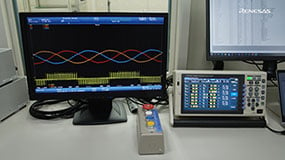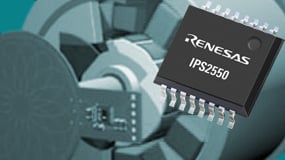Background
Resolver-less, semiconductor sensor-based solution is compact, lightweight and reliable
The control device supplier that is featured in this case study had been invited by an auto manufacturer it supplied to jointly develop a traction motor control unit for use in next-generation electric vehicles. However, the supplier had never developed a control unit for use in small or medium-sized vehicles before. Furthermore, if it was going to be part of the global transition to electric vehicles, the supplier needed to develop the unit in only two years. It needed to find a solution fast.
Problem
For a compact and lightweight design, component change is necessary but design and testing take time
The supplier immediately established a joint development project in conjunction with the auto manufacturer and began considering the specifications for the new control unit. For a start, the unit needed to be made significantly more compact so that it could be mounted in small and medium-sized vehicles. Naturally, further weight reduction was also necessary. In addition, since this model is aimed at the widespread use of EVs, offering the control unit at a lower price must also be considered. At the same time, because the development process needed to be finished in just two years, it appeared risky to make major alterations to components. The chief engineer A of the system development team explains:
"When developing hardware devices in a short period of time, we don’t want to make changes to components where possible, as doing so necessitates significant design changes. Clients are also reluctant to use components that don’t have a proven track record. This unit was going in a car, so quality and reliability were essential."
However, using the same components as those used in the current model would have made it impossible to reduce the controller's size, weight or price. Normally, when new components are incorporated into a piece of hardware, time and money need to be invested in design. In this case, there was no time for that. The project appeared to be at a dead end.
Around that time, employee A had been actively gathering information in the hope of resolving these issues and obtained information on a revolutionary component that seemed to offer a potential solution to the problem.




